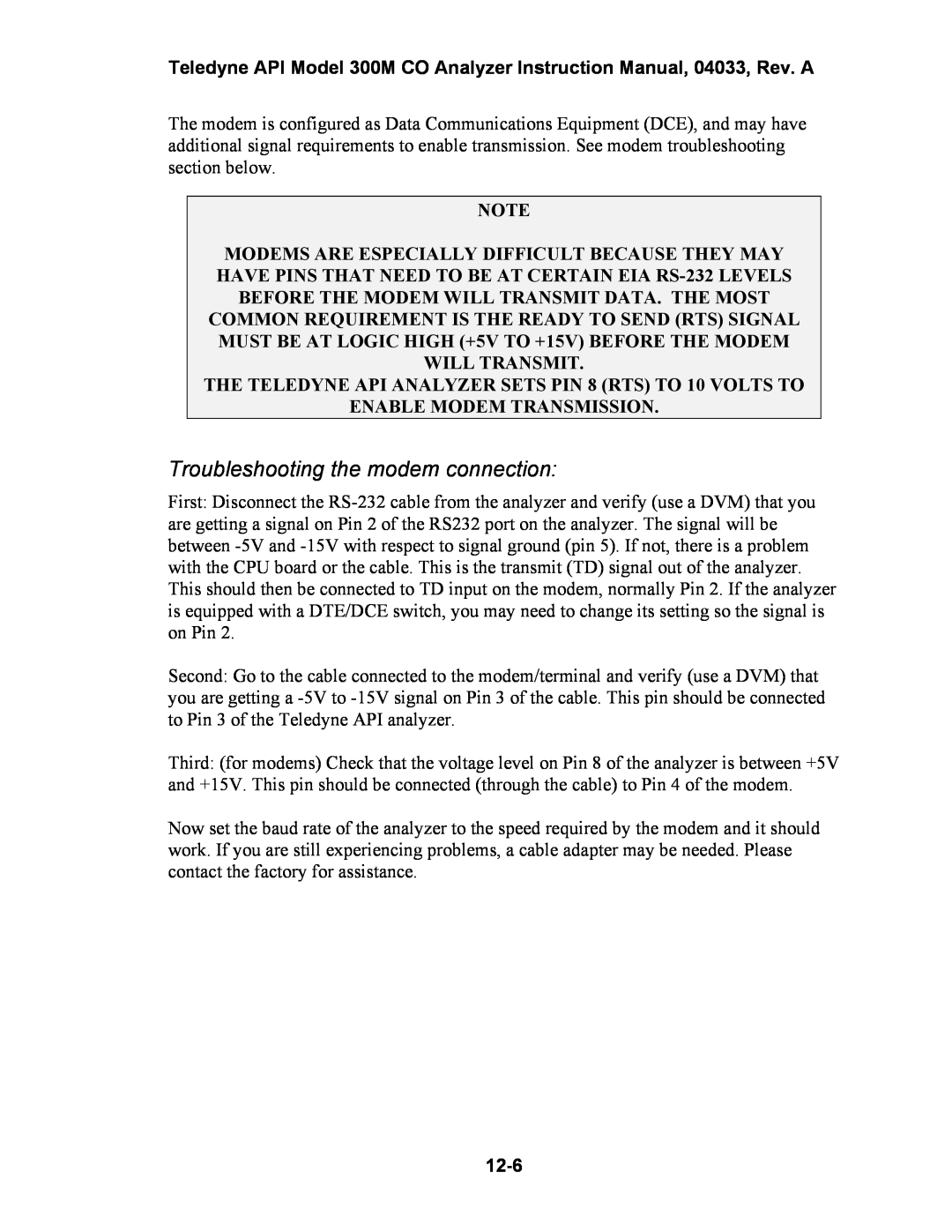
Teledyne API Model 300M CO Analyzer Instruction Manual, 04033, Rev. A
The modem is configured as Data Communications Equipment (DCE), and may have additional signal requirements to enable transmission. See modem troubleshooting section below.
NOTE
MODEMS ARE ESPECIALLY DIFFICULT BECAUSE THEY MAY HAVE PINS THAT NEED TO BE AT CERTAIN EIA
THE TELEDYNE API ANALYZER SETS PIN 8 (RTS) TO 10 VOLTS TO
ENABLE MODEM TRANSMISSION.
Troubleshooting the modem connection:
First: Disconnect the
Second: Go to the cable connected to the modem/terminal and verify (use a DVM) that you are getting a
Third: (for modems) Check that the voltage level on Pin 8 of the analyzer is between +5V and +15V. This pin should be connected (through the cable) to Pin 4 of the modem.
Now set the baud rate of the analyzer to the speed required by the modem and it should work. If you are still experiencing problems, a cable adapter may be needed. Please contact the factory for assistance.
